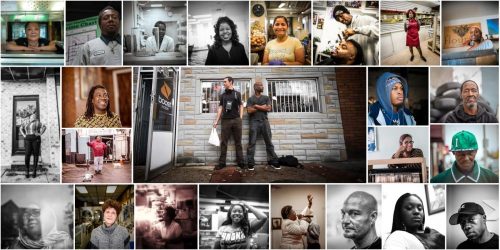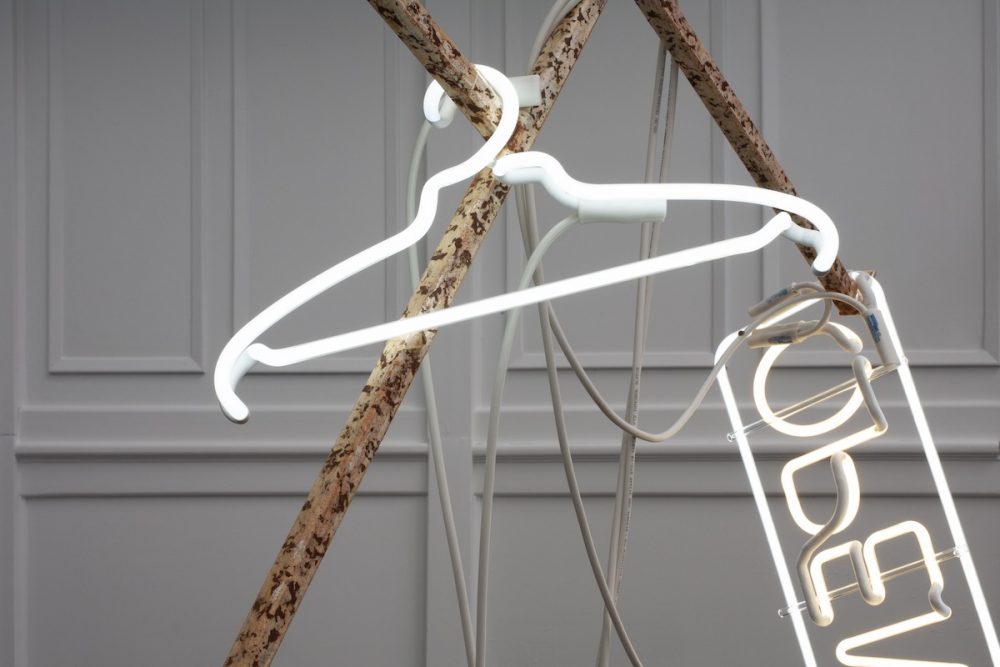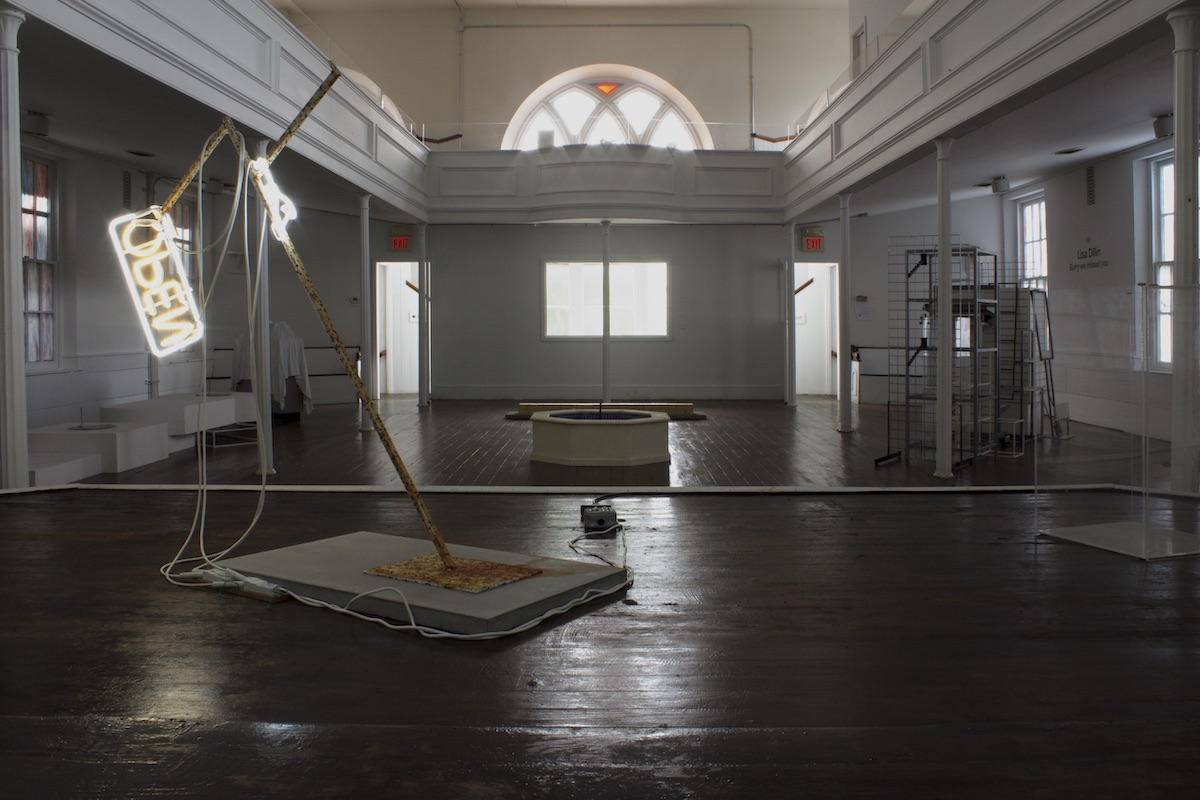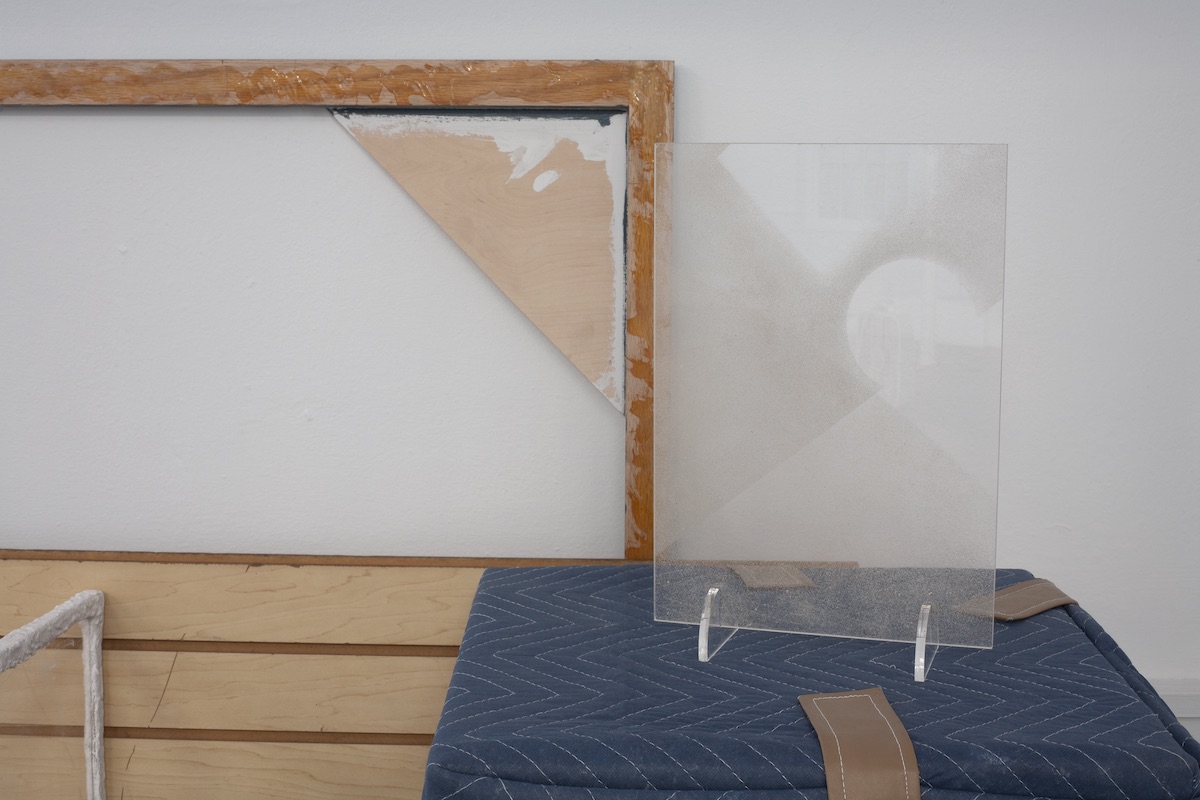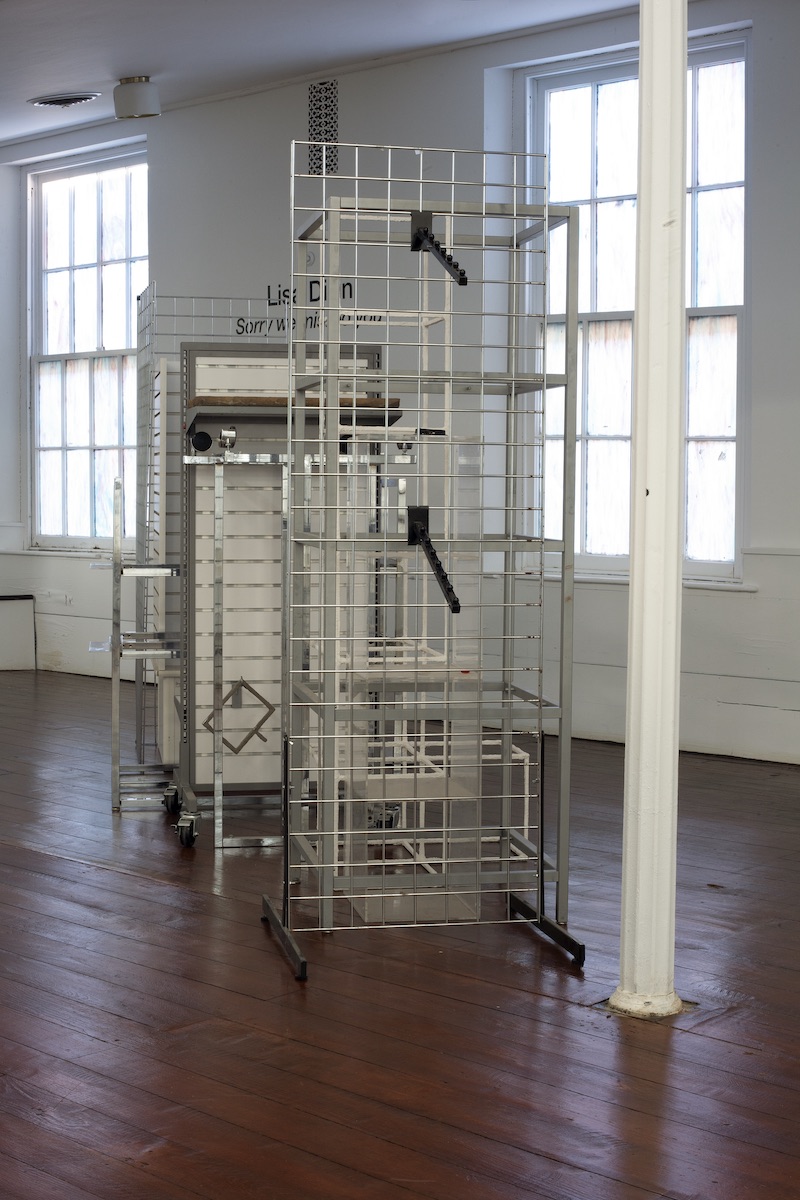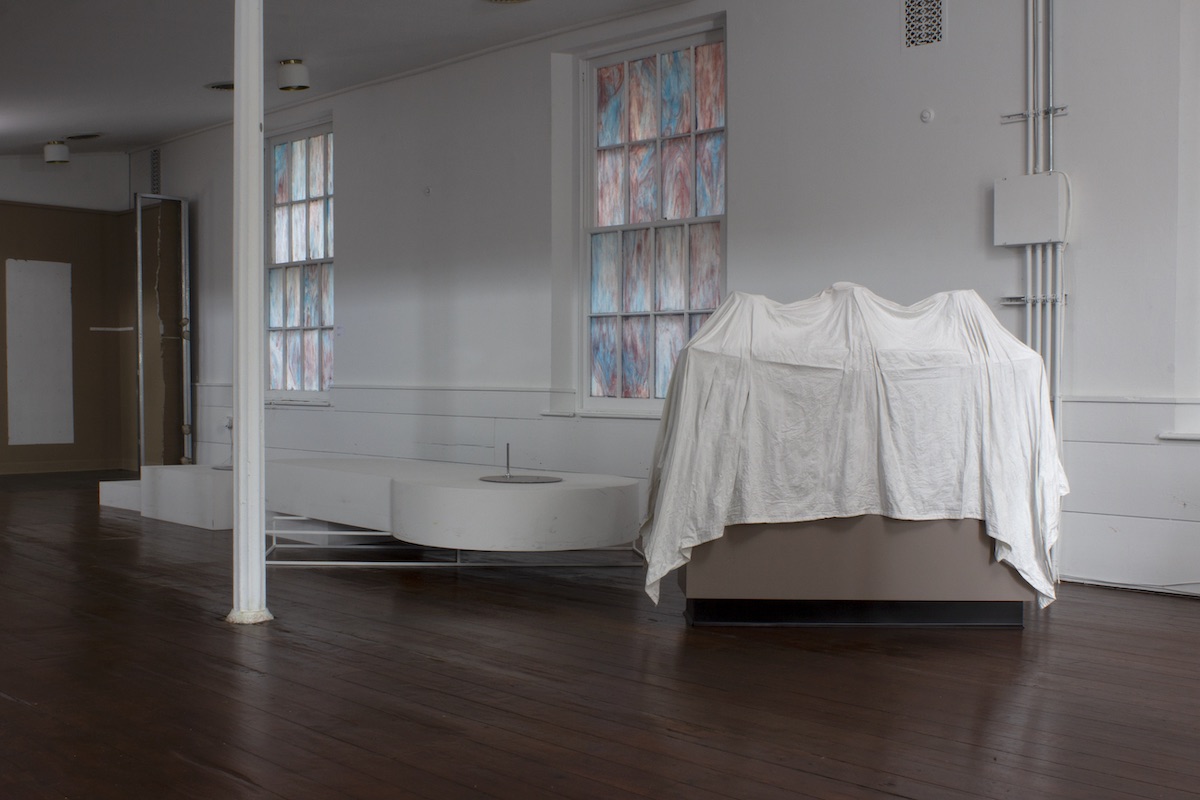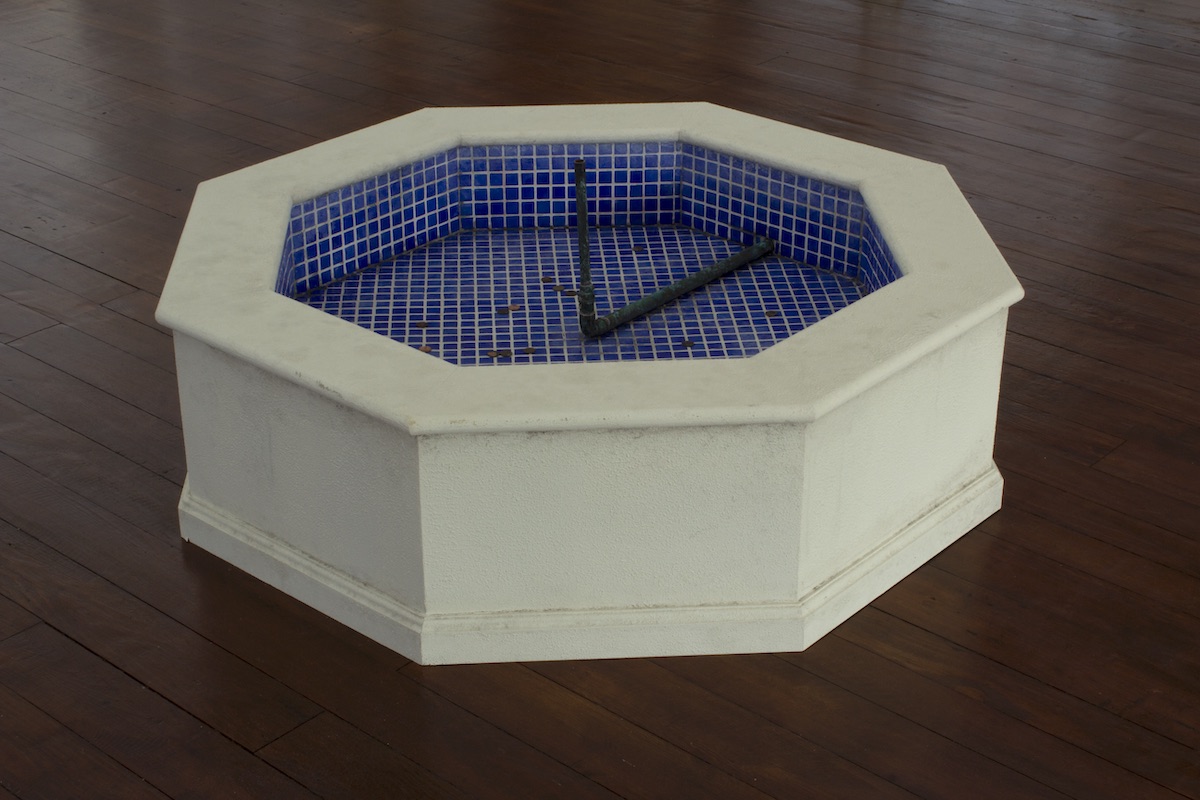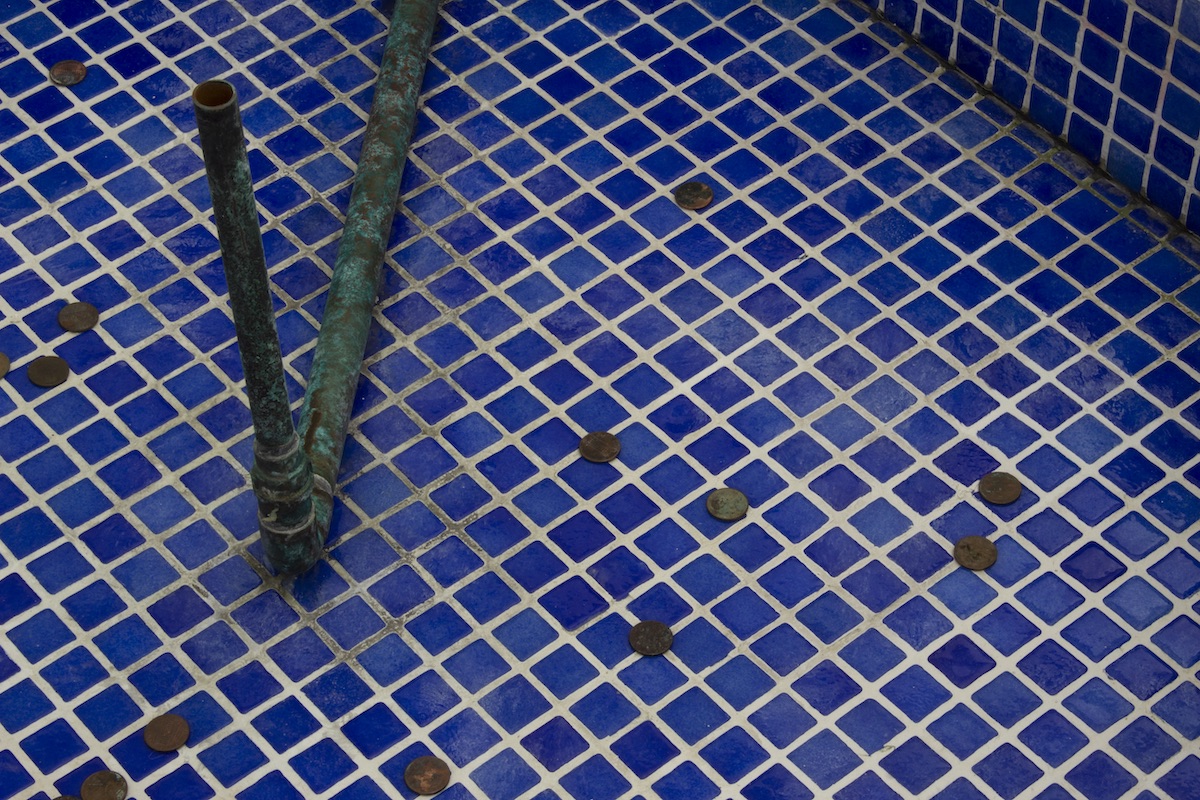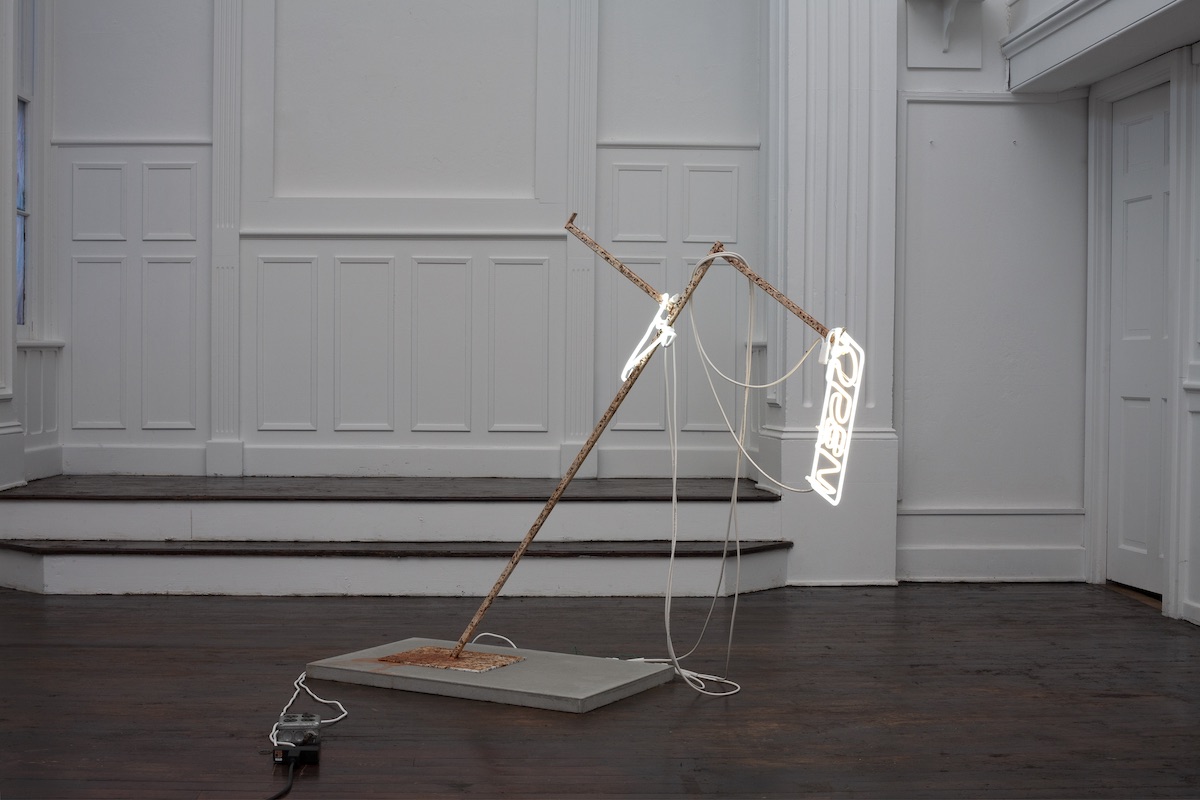Are there found objects in the show, or was each piece handcrafted?
Yeah, there are a lot of found objects in there. “Sorry we missed you,” with all the bricks and the pavers—those are found objects but specifically found, and then I had the engraving done with the words. “This is the place we came to” was fully fabricated, other than I didn’t create the glass tiles. “Skeleton of retail” is largely found objects, but there are also a lot of things in there that were created by hand. Some might look like found objects, but they were welded together by me, so you can’t tell, necessarily, which ones.
For the Solo lid, I took a mold of a lid from a coffee cup and lid that were in a tree well outside. I brought it inside—which was pretty strange and scary during COVID, to bring in something that someone’s mouth had been on—and took a mold of that. I tried it in lots of different materials—the dirt from the actual tree well, clay—and eventually, I came upon resin but didn’t fully cast it, so that it looks like it’s in a state of decay. It’s very fragile because it was barely cast.
There’s a lot of handwork in “Uncoupled,” but I didn’t create the blanket.
“Hanging on” was completely handmade by me, except for the neon glass, which was made to my specifications. There are lots of other things in there that are handmade, but it’s a good mix.
Let’s go back to the impetus of this show and talk about what the pandemic was like for you, day to day. What was it like, living right on Howard Street, to see everything turn into a ghost town for a while?
It was really eerie to see the emptiness of the sidewalks and the streets. There weren’t even cars on the streets. You could almost literally feel safe walking in the middle of any street. It was really strange. It’s not like that now. It’s changed back to be a little bit closer to normal, but we already had a lot of empty shops, even in the most prominent areas on Charles Street in Mount Vernon, and that continued to progress, to where there were even more closures. It was really disturbing. In some ways, it was slightly magical, not in a positive way, but just so surreal. It was a very jarring experience.
Overall, I feel like it is the opposite of why one moves to a city. I think you move there to be around a lot of other people, to go to cultural events, to walk to places, and not to be alone in your own place. People who want that tend to move to a more rural location. A lot of the benefits of living in a city were on hold. But this is all in the context of the ongoing economic decline, especially on Howard Street, where I live. There’s a lot coming back. The 400 block looks great, as compared to before. It’s pretty remarkable. But then, the 200 block, you’ve got the famous empty Hutzler’s department store in what was a very vibrant area.
This Q&A has been edited for clarity.
